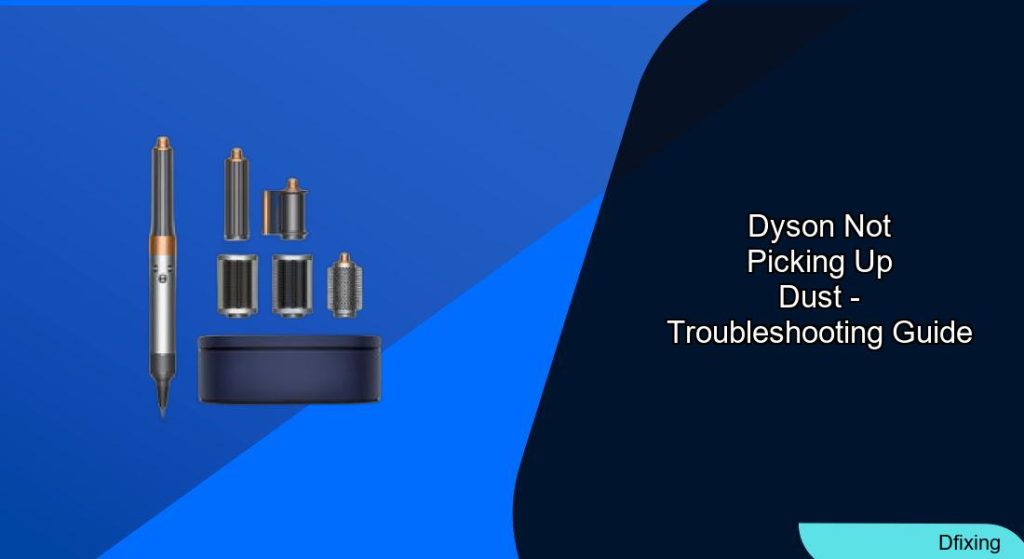A Dyson vacuum that fails to pick up dust can be frustrating, especially when you’ve invested in a premium cleaning tool. This common issue typically stems from airflow obstructions within the vacuum system. The good news is that most suction problems can be resolved with proper troubleshooting and maintenance.
Affiliate disclosure: As an Amazon associate, We'll earn a commission for every successful order through our affiliate links in the article. However, you won’t be charged anything for this.
In this comprehensive guide, we’ll explore the various reasons your Dyson vacuum might not be picking up dust effectively and provide detailed solutions to restore its cleaning power. From simple maintenance tasks to more complex fixes, you’ll find step-by-step instructions to address the problem and get your Dyson vacuum working at peak performance again.
Common Causes of Poor Suction in Dyson Vacuums

When your Dyson vacuum stops picking up dust effectively, the culprit is almost always restricted airflow somewhere in the system. Here are the most frequent causes:
Full Dust Container
One of the simplest yet most overlooked issues is a full dust container. When the bin reaches its capacity, airflow becomes restricted, significantly reducing the vacuum’s suction power.
How to fix it:
* Empty the dust container after each cleaning session, especially following heavy-duty cleaning tasks
* Clean the inside of the container with a dry cloth to remove any stuck debris
* Ensure the container is properly reattached to the vacuum
Clogged Filters
Dyson vacuums typically have multiple filters that trap fine dust particles. Over time, these filters accumulate dirt and become clogged, restricting airflow and reducing suction power.
How to fix it:
* Remove all filters from your Dyson vacuum
* Rinse each filter under cold water until the water runs clear
* For stubborn clogs, soak the filter in a solution of warm water and mild detergent
* Thoroughly rinse to remove all soap residue
* Allow filters to air-dry completely for at least 24 hours before reinstalling
* Replace filters annually with regular use
If your vacuum filters are damaged or excessively dirty even after cleaning, it may be time to replace them to ensure optimal performance.

Official OEM filter for V11/V15 with H13 efficiency

Premium H13 filters for V11/V15, 3-pack value

Includes 3 post and pre-filters for V7/V8, H12 efficiency

Budget-friendly pre-filters for V6-V8, H12 efficiency
Blocked Hose or Wand
Debris can accumulate in the hose or wand, creating blockages that restrict airflow and reduce suction power.
How to fix it:
* Disconnect the hose and wand from the vacuum
* Visually inspect both components by shining a light through them
* Use a straightened wire hanger or pipe cleaner to carefully dislodge any visible blockages
* Check for damage such as cracks or holes that might cause air leaks
* Replace the hose if you notice any damage that can’t be repaired
If your Dyson’s hose is cracked, torn, or otherwise damaged, a replacement will restore proper suction.

Official replacement for DC14 vacuum with guaranteed compatibility
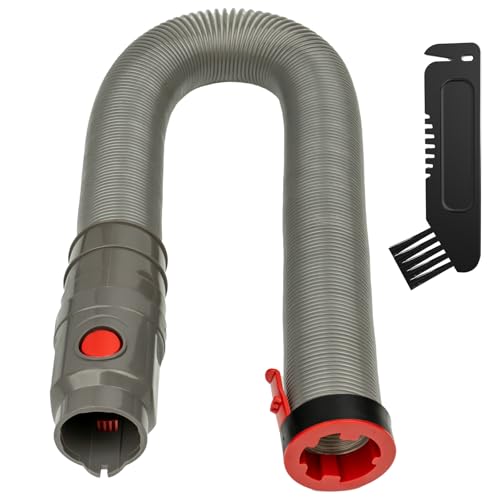
High-quality non-genuine hose for Ball Animal series vacuums
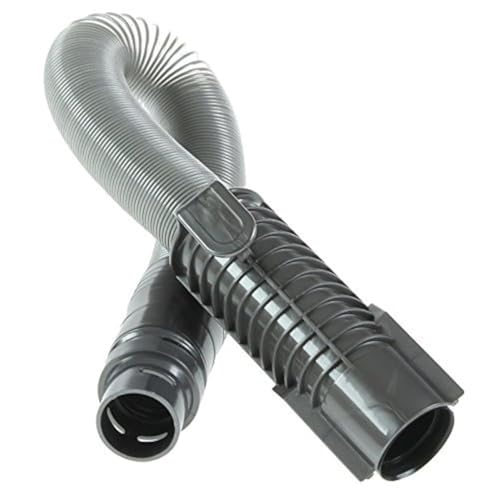
Extended hose for enhanced cleaning flexibility

Official hose with exceptional reach for DC07 models
Damaged or Worn Seals
The seals and gaskets throughout your Dyson vacuum create an airtight system essential for proper suction. When these components wear out or become damaged, air leaks occur, reducing the vacuum’s pickup power.
How to fix it:
* Inspect all seals and gaskets for signs of wear, cracks, or damage
* Pay special attention to the seals around the dust container and filter compartments
* Replace any damaged seals with genuine Dyson parts
* Ensure all components are properly seated and secured when reassembling
Worn or damaged seals can significantly reduce suction. Replacing them ensures an airtight system.
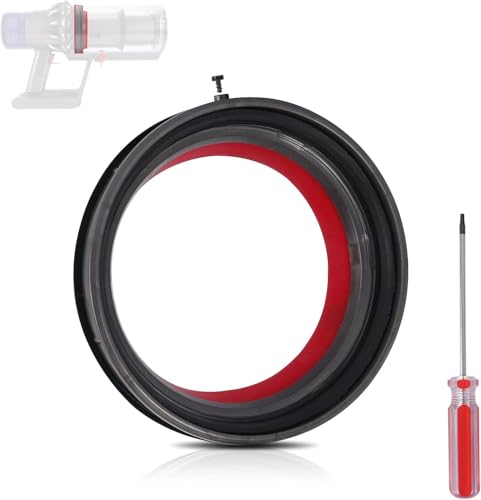
High-quality replacement for V10/SV12 vacuum sealing ring

Optimized seal for V11/V15 vacuum cleaners
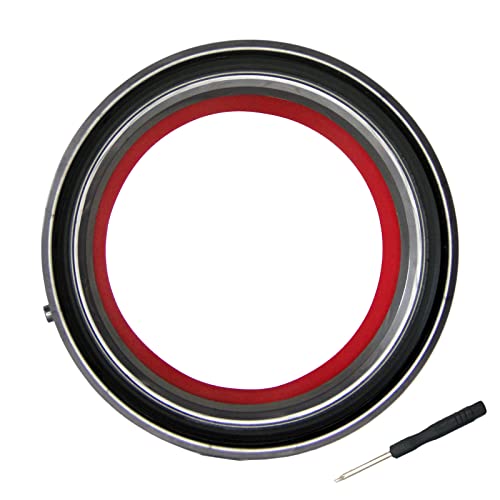
Cost-effective sealing solution for V10 models
Troubleshooting Dyson Vacuum Brush Roll Issues
While brush roll problems don’t directly affect suction, they can significantly impact your vacuum’s ability to pick up dust and debris, especially on carpets.
Malfunctioning Brush Bar
When the brush bar becomes jammed or stops spinning, the vacuum’s cleaning effectiveness decreases dramatically, particularly on carpeted surfaces.
How to fix it:
* Unplug the vacuum or remove the battery for cordless models
* Remove the cleaner head to access the brush bar
* Use scissors to cut through any tangled hair or threads
* Gently pull out all debris from around the brush bar
* Inspect the brush bar for damage and replace if necessary
* Check the brush bar belt for signs of wear or damage
If the brush bar is damaged or worn, replacing it will improve your vacuum’s cleaning performance, especially on carpets.
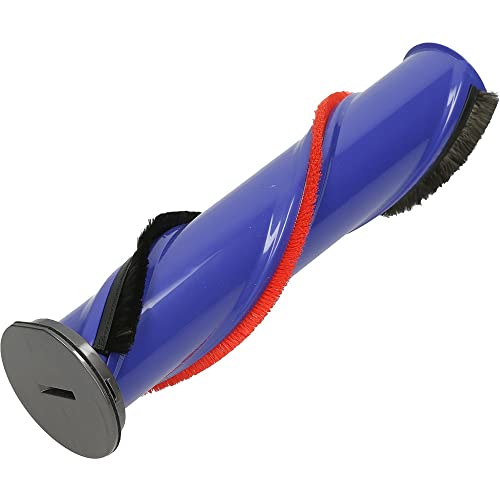
Official Dyson replacement with nylon bristles for optimal cleaning performance

Affordable replacement for older Dyson corded models

Premium anti-tangle brush for pet hair removal

Budget-friendly replacement for multiple Dyson models
Overloaded Brush Roll
Hair, threads, and fibers can wrap around the brush roll, preventing it from spinning properly and reducing cleaning effectiveness.
How to fix it:
* Turn the vacuum upside down to access the brush roll
* Use a seam ripper or scissors to cut through tangled hair and fibers
* Pull debris away from the brush roll and end caps
* Use a lint roller for final cleaning of the brush roll
* For persistent tangles, remove the brush roll completely (if your model allows) for more thorough cleaning
Addressing Specific Dyson Model Issues
Different Dyson models may have unique components that require specific troubleshooting approaches.
Cleaner Head Height and Type
Using the wrong cleaner head or incorrect height setting can significantly impact dust pickup, especially on different floor surfaces.
How to fix it:
* For hard floors, consider using a Dyson Soft roller cleaner head (Fluffy head) for optimal pickup of both large debris and fine dust
* Ensure motorized cleaner heads are set to the correct mode for the surface being cleaned
* Adjust the height setting if your model has this feature to match the floor type
* Check that the cleaner head is properly attached and locked into place
Upgrading to a specialized cleaner head, like the soft roller head, can significantly improve performance on specific floor types.

Official Dyson replacement for V10 and V11 models

Premium Dyson V8 model with quick release feature
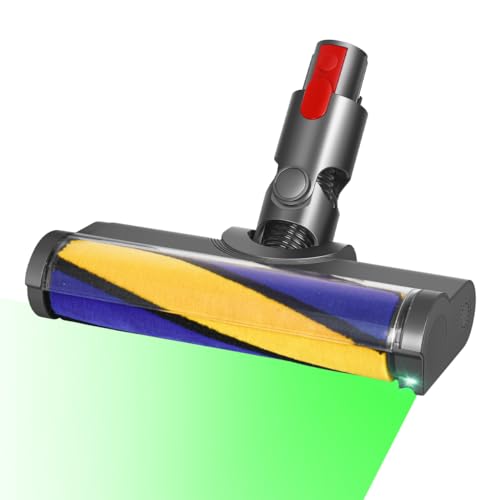
Illuminated head for hidden dirt visibility
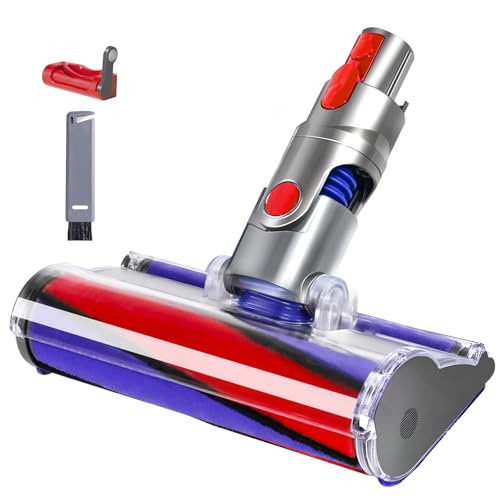
Affordable hard floor cleaning alternative
Changeover Valve Issues
The changeover valve directs suction between the cleaner head and the hose. When it malfunctions, suction may not reach the cleaner head properly.
How to fix it:
* Remove the cleaner head and test suction directly at the attachment point
* Lay the vacuum flat and check for strong suction from the hose
* Locate the small tube with a red cap at the back of the machine and verify it’s properly connected
* Inspect the valve mechanism for blockages and clear them manually
If the valve is damaged, consider professional repair or replacement (Replacement part: Dyson Changeover Valve Assembly)
A faulty changeover valve can prevent suction from reaching the cleaner head. Replacing it will restore proper functionality.

Genuine Dyson part for DC40 models

Equivalent replacement for DC40, DC42, DC50, DC51
Blocked Cyclone Area
The cyclone area, particularly in cordless models like the V10, can become blocked and restrict airflow.
How to fix it:
* Remove the wand and dust bin to access the cyclone inlet
* Check for blockages in the cyclone inlet and clear any visible debris
* Inspect the smaller opening on the cyclone for clogs
* Gently tap the cyclone assembly on the side of a trash bin to dislodge trapped debris
* Use a brush tool to clean the outer mesh of the cyclone
Advanced Dyson Vacuum Troubleshooting
For more persistent issues, you may need to perform more in-depth troubleshooting and maintenance.
Internal Blockage Inspection
Sometimes blockages occur in less accessible areas of the vacuum, requiring more thorough investigation.
How to fix it:
* Disassemble the vacuum by removing all detachable parts
* Use a flashlight to examine internal components for hair, fibers, or foreign objects
* Pay special attention to the black-rimmed mesh component, which can trap debris and is difficult to see when clogged
* Use a non-metallic tool to carefully dislodge any clogs without damaging internal parts
* Reassemble the vacuum, ensuring all components are properly secured
Addressing Pulsating Operation
A pulsing sound in Dyson cordless vacuums often indicates an internal flap malfunction or blockage.
How to fix it:
* Disassemble the vacuum by removing the bin
* Access the internal flap and ensure it moves freely
* Check for obstructions around the flap mechanism
* Clean the interior of the flap and surrounding area with a brush to remove debris
* Reassemble the vacuum and test for normal operation
Blocked Air Intake System (Dyson V11)
The Dyson V11 has a specific air intake system that can become critically blocked, particularly at the silver grate.
How to fix it:
* Tools required: T2 Torx bit and standard screwdriver
* Remove multiple screws to access the internal chamber
* Extract the blocked silver grate
* Clean the grate thoroughly using a fine paintbrush to remove accumulated dust
* Reassemble the vacuum and test suction
* Periodically inspect and clean this component to maintain optimal performance
Maintenance Tips to Prevent Suction Loss
Preventive maintenance is key to avoiding suction problems with your Dyson vacuum.
Regular Cleaning Schedule
Implementing a consistent cleaning routine for your vacuum helps prevent buildup and maintain optimal performance.
- Clean the filter after every 3-4 uses
- Empty the dust bin after each cleaning session
- Remove and clean the brush bar monthly
- Inspect the hose and wand for blockages every few weeks
- Check seals and gaskets periodically for damage
Proper Vacuum Usage
Using your Dyson vacuum correctly can help prevent common issues:
- Use the appropriate attachment for each surface type
- Avoid vacuuming large debris that could cause blockages
- Clean smaller areas more frequently rather than overwhelming the vacuum with too much dirt at once
- Pre-clean heavily soiled areas with a lint roller before vacuuming
- Use the correct power setting for the surface being cleaned
Filter Maintenance
Proper filter care is essential for maintaining suction power:
- Wash filters with cold water only, never hot water
- Never use detergents or cleaning products unless specifically recommended by Dyson
- Allow filters to dry completely (24 hours minimum) before reinstalling
- Replace filters annually with genuine Dyson replacements
- Never operate the vacuum without filters properly installed
Frequently Asked Questions (FAQ)
Why does my Dyson vacuum make a high-pitched noise but has no suction?
A high-pitched noise combined with no suction typically indicates a serious blockage somewhere in the vacuum system. Check all pathways for airflow, including the hose, wand, cyclone inlets, and brush bar. Also inspect the motor inlet for any debris that might have bypassed the filtration system.
How often should I replace my Dyson vacuum filters?
With regular use, Dyson recommends replacing filters approximately once per year. However, if you notice persistent suction issues even after thorough cleaning, or if the filters appear damaged or excessively worn, replace them sooner. Always use genuine Dyson replacement filters for optimal performance.
Why does my Dyson cordless vacuum keep cutting out during use?
If your cordless Dyson vacuum cuts out during operation, this typically indicates either a battery issue or an overheating motor. First, ensure the battery is fully charged. If the problem persists, check for blockages that might be causing the motor to work harder and overheat. Also, clean all filters as clogged filters force the motor to work harder, triggering thermal cutoff protection.
Can I wash all parts of my Dyson vacuum with water?
No, not all Dyson vacuum components are washable. Generally, only the pre-motor filters and some (but not all) post-motor filters can be washed. Never wash electrical components, the cyclone assembly, or the motor unit. Always refer to your specific model’s user manual for detailed cleaning instructions.
Is it normal for my Dyson to lose suction over time?
While some minor reduction in suction power over years of use is normal due to general wear and tear, a significant loss of suction is typically due to maintenance issues rather than normal aging. Regular cleaning and maintenance should keep your Dyson vacuum operating at near-optimal levels for many years.
Conclusion
A Dyson vacuum that’s not picking up dust is almost always suffering from restricted airflow somewhere in the system. By methodically checking each potential problem area—from the dust bin to the filters, hose, brush bar, and internal components—you can identify and resolve the issue.
Regular maintenance is the key to preventing suction problems. Emptying the dust bin frequently, cleaning filters according to the manufacturer’s recommendations, and inspecting for blockages will help ensure your Dyson vacuum continues to deliver the powerful suction it’s known for.
If you’ve tried all the troubleshooting steps in this guide and your Dyson vacuum still isn’t picking up dust properly, it may be time to contact Dyson customer support or a certified repair technician. With proper care and occasional professional maintenance, your Dyson vacuum should provide many years of effective cleaning performance.

